'What will happen, I hope, is that one or two OEMs will decide quite soon that they want to be the first five-star BharatNCAP (Winner).'
David Ward, Secretary General, Global NCAP talks pn the latest crash test results, the experience of testing cars from India & Europe, and India’s potential in setting global quadricycle regulations.
David Ward, Secretary General, Global New Car Assessment Programme (Global NCAP), in a freewheeling chat with Sumantra B Barooah, talks about the latest crash test results, the experience of testing cars from India and Europe, and India’s potential in setting global quadricycle regulations while also responding to allegations of vested interests behind Global NCAP’s focus on India.
The ratings in the latest tests are similar to the earlier tests. Is there anything that stands out in this round?
First of all, it’s clear that the results are quite disappointing. They are all zero star cars. But I think that is a bit of what you may call a legacy effect of the fact that India has not had crash test regulations and not had an NCAP. Because of decisions of the government to commit to regulations and the expected creation of Bharat NCAP, those things are changing. So, I think that’s a very positive background development and it’s important to keep that in mind when you see these results because they are all products that were developed before these regulatory commitments.
The other thing that’s maybe surprisingly positive in the circumstances is to see some manufacturers moving to improve the vehicles very rapidly. It’s particularly paradoxical with the Renault because I have quite mixed feelings about the whole thing. At one level, I am quite disappointed and surprised that Renault would introduce the very first version of the Kwid at all. Maybe it was hurrying to get into the market or something. So, on that side it’s a big thumbs down for a global manufacturer.
However, more positively, or a thumbs up, is that it moved rapidly to try and improve the vehicle. We have yet to see the next version but I am hopeful that it will score considerably better and get positive star ratings. That together with similar steps forward by manufacturers like VW and Toyota and more, you can see a trend of positive engagement from the industry. My perspective is from my experience of 20 years or more ago in Europe where we had very similar problems of poor crash test regulations, no NCAP and then we had to fight for regulations and fight to create the NCAP.
How would you compare Global NCAP’s phase with India with the initial phase of tests in Europe where it started 20 years ago?
I think everything is happening quicker here than it did 20 years ago. The argument on the basic regulations went on for nearly 10 years before they finally approved them in 1996 and applied them from 1998. That was a long-drawn-out battle where the industry was not being very helpful.
With NCAP, there was similar initial and very blatant hostility at the beginning. But the funny thing was that the manufacturers who were doing well couldn’t resist marketing with it and that was the big change.
So, after a few years, we started to see very, very strong performance. Interestingly, the one that really did the best at the beginning was Renault. It became the manufacturer with the maximum number of five-star cars.
Everything we are seeing here in India is in a much more shortcut time-frame. So, from that point of view, we have done three sets of tests and condensed the whole debate about crash test regulations and creating the NCAP into maybe three-and-a-half years. That’s way quicker than the 15-odd years it took in Europe.
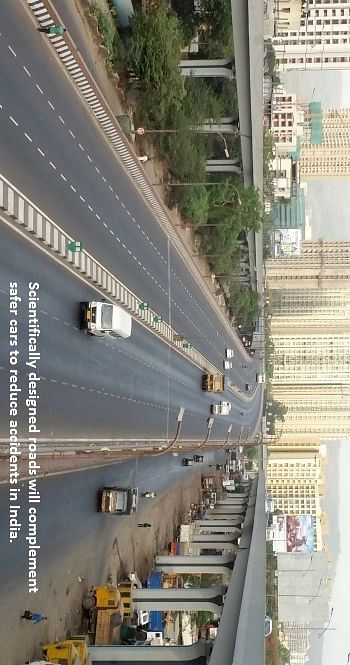
Were all OEMs, in the latest tests, approached to offer a reinforced version of their model/s?
We don’t necessarily specify how they improve it, but if a manufacturer wants to come with a better version then we will do that but always on the condition that we publish the original result.
What we can’t do is discover a bad result and then say, “That was terrible and if you improve it we will publish only the improved result.” No, we never do that. Everything we test we have to publish. But I think manufacturers are kind of used to that process in other NCAPs. Although I must admit that I can’t recall in 20 years or more that I have been involved, that I have ever seen the experience we have had with the Kwid where there were sort of incremental improvements, step by step. I think it reflects the bad starting point.
You also tested a model (Scorpio) for the first time from Mahindra & Mahindra. Though Indian automakers have been in the market for a long time, they don’t have a rich history of engineeringand manufacturing vehicles like some global OEMs.
Maybe but I think the kind of skills we are talking about here are so basic. I would understand more if it’s about advanced electronics and crash avoidance. But the engineering of a body shell is so basic and it’s so well understood that I can’t believe that’s an issue.
These days there is such a lot of experience globally in the automotive sector, lot of interchange between staff, and expertise and engineers, I think it’s all a level playing field.
There is also the argument against the 64kph test speed. But Bharat NCAP is proposing 56kph.
Well, that seems to be going for a hybrid. But with the requirement tested for 64kph, if you want five stars I think it’s good that they want to include 64kph in the protocol somewhere.
Our preference and simple approach is simply to say we will follow what other NCAPs are doing and just have 64kph for the whole range of tests. In the end, the direction of travel is more important.
What will happen, I hope, is that one or two manufacturers will decide really quite soon that they want to be the first five-star Bharat NCAP. There is a sort of race for the first one to do it. Once you start having that happening, very soon there will be more than one.
I think what will happen inevitably is that it will be too big a marketing option to resist and then with the evolution I suspect 64kph will become more and more common.
Also, maybe, it is a bit to do with the understanding of the issues between a role of a regulation and NCAP where I think across-the- board policy makers and even decision makers in the companies in India are not fully aware of the kind of clear distinction between a minimum UN regulation of 56kph and then the purpose of a higher speed test, where you are trying to measure differences and to incentivise performance above the regulation.
But in a context where there has been no regulation, you can see they may be thinking this is a bit dramatic because we are kind of asked first to do 56kph and now it is 64kph. 64kph is not a regulation, it’s like a competitive opportunity for manufacturers.
I think Bharat NCAP is moving in the right direction. It’s impressive that they are including a pedestrian element. We look forward to it operating.
Do you feel, based on interactions with the decision makers in OEMs that there is an acceptance or an inclination towards striving for such high rated products?
It’s quite a different tone of engagement even since the very first set of results. When we first did the results in early 2014, we were described as a bit of ‘gatecrashers’ and all those slightly hostile comments.
Also, claims that we had some hidden agenda to create laboratories all over India or we were funded by a particular manufacturer.This sort of stuff, which is all nonsense. It didn’t surprise me but it was a bit unpleasant. That’s all gone.
Now it’s a substantive argument about the merits of 56 or 64kph, not some kind of conspiracy-type theory. So I think people trust our motivation and also that we have got such good partners here with IRTE. Actually, the dialogue with the government is very impressive. So, overall, I think the engagement is pretty good and I think we will be surprised in a few years to see where things have moved.
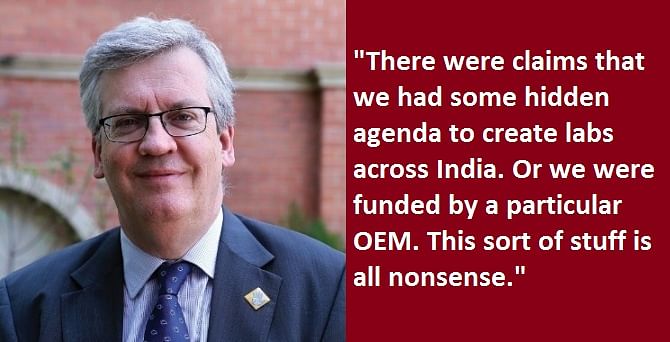
There is also a belief that because a high NCAP rating is a strong marketing tool, Global NCAP is strongly propagating crash tests so that it can gain revenue from some of the test results.
We are basically dependent on philanthropic resources. We aren’t trading commercially so there is no substance in that at all. In the long run, we would like to be in a position where NCAP simply is a reliable independent information about vehicle safety. I am quite optimistic that by 2020, across the world we would have totally eliminated zero star cars. I think it’s just the phase that the industry is in, and it’s a legacy problem. As all these markets regulate appropriately, it will just wash out of the system.
The challenge, looking forward, is about consumer awareness. What we are trying to do now is raise consumer awareness to occupant protection and those kind of choices. The future challenge, which is a huge one for the automobile industry, is to get users used to – and accept – crash avoidance technologies that gradually take driving functions assist, and even take driving functions away. That’s going to be a massive change to market expectations and consumer understanding.
When that process starts, and it is already starting in Europe and maybe in the US, the customer wants to trust people and they are going to require NCAP-type operations to be reassured that the things that are being sold are worthwhile. In that process, we will have to co-operate with manufacturers. You just have to because the technologies are very complex. The relationship will be positive because we can help industry persuade the public of these technologies in the future. All in the common interest of trying to get fatalities and injuries even ultimately eliminated on the road. So, that’s the end ambition.
Obviously, we have certain costs we need paid for. In a way we are like an independent audit process globally. How is that funded? At present, we are funded by our two main philanthropies. We do charge for some of our crash test work where OEMs request the test.
One issue going forward, we even proposed this recently, is that there could be a case for a special fund globally and the UN general assembly when it adopted a resolution on road safety in April, they mandated for an idea for a UN road safety fund to work on general road safety.
One of the proposals we thought about is suppose some resource in that fund is dedicated to finance independent research and audit testing, one possibility would be to use recall funds. In the US alone in the last few years, there has been around $168 million of fines. If we had 10 percent of that allocated to a road safety fund for vehicle testing globally, it will contribute to covering costs better.
With autonomous driving coming up, are you designing test procedures for those cars?
Not Global NCAP but Euro NCAP and US NCAP are. They are starting to look at those sort of issues. At the moment, they are still very busy just developing test procedures for driver assistance systems like advanced emergency braking. Euro NCAP is getting pedestrian testing, bicycle testing and all of these different systems.
It is quite a challenge to develop test protocols that capture all of this. Actually, another interesting phenomenon is that this is increasingly being done between NCAPs because it will be very inefficient for four or five NCAPs to offer such different ways of testing. So, I can see the evolution in terms of research in this area becoming more shared, more global and in the end, yes, embracing aspects of autonomous driving.
You also say that India is ahead of the US in terms of regulation for two-wheelers and has the potential of being a global leader in quadricycle regulation.
You can see one in pedestrian including that in NCAP. In fact, the US NCAP has just announced it is going to include pedestrian. So may be Bharat NCAP will get a jump on them. I think that’s only going to be applied from 2018. So, if Bharat NCAP does it, they will beat them
As regards two-wheelers, the US is not yet regulated. Certainly on quadricycles, we are not satisfied with the European or the UN ECE regulation for that class of vehicles. It would be perfectly possible for India to take the lead in doing this through its participation in the UN Forum. In fact, the US is an example of that. The US, when it adopted the regulations for electronic stability control (ESC) back in 2006-07, it went to Geneva and the UN Forum and proposed it as a GTR (Global Technical Regulation) under what is called the 1998 agreement. So, the US gets the credit for introducing the ESC regulation.
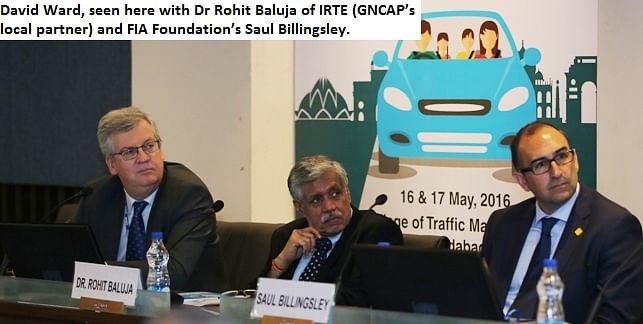
If India wanted to do that, it would be doing a service, not just to itself but to the world, and could lead on that. Actually, I quite enjoyed reading the letter correspondence between me and Mr Bajaj. I was very glad that he responded. I don’t agree with a lot of his arguments but nevertheless, I think they have a great opportunity.
Bajaj Auto is a mass player. When you look at the domestic market here, the volumes are multiples of what Europe or any other market would provide. In this case, preparing that kind of specs will hardly find takers because it’s in a very price sensitive market.
I am suggesting this in the European market. In Europe in the urban centres where there is a lot of sensitivity to the environment and avoiding congestion, I think the market for those vehicles could be bigger than they seem to suggest.
I am not a businessman, but my challenge to a businessman is if you can make the product try and sell it. What is true is that in Europe you have an established sensitivity to safety issues now. You have had 20 years of Euro NCAP now. I think one of the problems they have got is the negative stories about quadricycles because in Europe due to the Euro NCAP crash testing, maybe it’s diminishing the opportunity. If they can overcome that by producing a much safer one, they could be the winners.
Once Bharat NCAP comes into effect and starts operations, will Global NCAP disengage from India?
We would want to become like we are with our other NCAPs, a close partner of Bharat NCAP. Once there’s an NCAP functioning in a country or a region, it’s not our job to replicate that work but rather to support it. That’s what we do with Latin NCAP and ASEAN NCAP.
We hope Bharat NCAP, once it is up and running, will become, a part, if you like, of the NCAP family. I don’t want to not come to Delhi again after this! Our mission is to, before the end of the decade, try and have an NCAP activity in every part of the world.
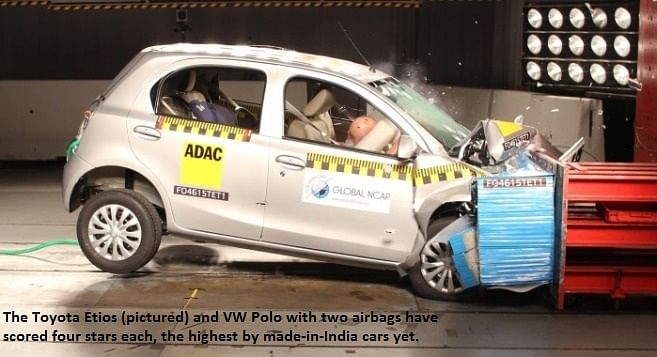
How would you rate the experience of engaging with the Indian government/ governmental bodies compared to other countries with NCAPs?
Very positive. At one level, we were quite fortunate that when we started this programme it was just at the transition, or the arrival of the Modi administration. That was luck really. The new government came with a fresh look. I also think that some of the officials also could sense there was an opportunity for change.
We had very positive interactions both at the level of officials and the political level. What I think is that there is real sincerity in the interest. And I know that
Mr Modi lost the rural affairs minister within weeks of the government formation, in a car crash. It’s really tragic. Mr Gadkari was talking about himself being involved in a car crash. My own sense, having talked to him, is that this is a genuine commitment, not a paper commitment. They are fully aware of all the challenges. They should be. It’s literally eyeball-to- eyeball contact. You can feel there’s sincerity there. And there’s a real interest on the part of the whole of the government apparatus to do something. That’s very important. What you feel comfortable with is that they have backed it with decisions.
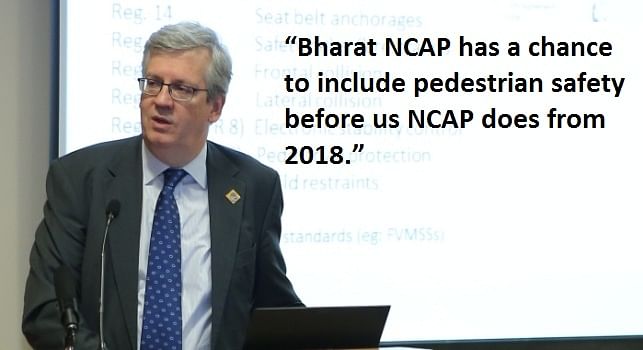
The commitment to legislation is there and the fact is that they have done ABS on motorcycles as well. That shows serious commitment measured by real action. I think there’s a subtle change here, which I think is healthy, which is, I think the government is being more assertive about its role in this rather than delegating that to industry.
Sometimes the industry is sort of its own worst enemy, and this isn’t India-specific. It’s a general point. The trouble with the industry is that it’s always got ones who are more advanced and others who are not so advanced. So, industrywide positions always become the lowest common denominator. That isn’t necessarily the best recipe for good regulation.
I think actually the better thing is to have regulations set at minimum levels but not sort of sub-minimum. Similarly, when you have an NCAP, you allow this sort of performance stretching element. But it is very hard for industry, any industry in any sector, to come up with regulatory models like that because they always go back to the lowest common denominator.
So, what you need is the government to push them that bit further. And also external bodies like us doing it, that’s sort of a natural role for NCAP. In the end, it is healthy. The analogy is a bit like a fitness regime. You have to have somebody telling you, “Sorry, you've got to spend a bit more time on the treadmill even if you want to stop. If you want to get those pounds off, you've got to do a bit more.” That’s the sort of the model, and I think it’s encouraging to see that here.
You may like: Exclusive interview with Rashmi Urdhwareshe, director of ARAI
RELATED ARTICLES
'India Can Become a Major Pillar for Us' - Marquardt Group
Björn Twiehaus, CEO of Marquardt Group, and Vishal Narvekar, the company's India GM, share their outlook on the Indian m...
Luxury Car Market to Slow in 2025: Mercedes-Benz Sees Flattish Numbers
In Jan to March of 2025, the market may witness its slowest growth since COVID-19, and if the weakness continues, the se...
‘We Must Have More Women Leaders in the Auto Sector:’ Anjali Rattan
The chairperson of the New Delhi-headquartered RattanIndia Enterprises believes that with their multi-tasking nature, wo...






 By Sumantra B Barooah
By Sumantra B Barooah
 13 Jun 2016
13 Jun 2016
 10501 Views
10501 Views





 Darshan Nakhwa
Darshan Nakhwa


 Prerna Lidhoo
Prerna Lidhoo


